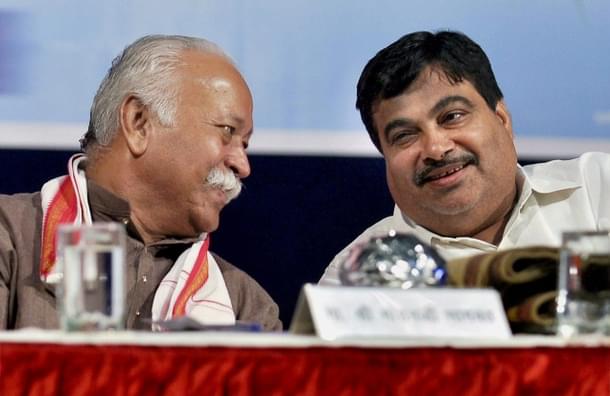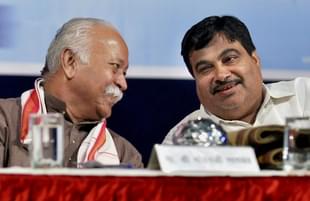Featured
Building a Conservative Movement: A Few Thoughts on the Way Forward
Dilip Rao
Mar 03, 2011, 02:11 AM | Updated Apr 29, 2016, 03:09 PM IST
Save & read from anywhere!
Bookmark stories for easy access on any device or the Swarajya app.


This post is part of the CRI’s 1st year anniversary celebrations. We have launched a blogging festival where every member of the CRI Commentariat will participate and write on issues that affect their political outlook. Podcasts with Conservative intellectuals are also coming up, so stay tuned
Nikunj Mehta has written two posts already (here and here) outlining ideas on building a conservative movement. I am generally in agreement with most of what he says. I agree that it is necessary for economic and other policy conservatives to join forces with the traditionalists in order to push the movement forward. As he says, such an arrangement already exists within the Sangh to a significant extent.
In the West, traditionalists and libertarians have come together under the same big tent because of a convergence of interests in key areas. Libertarians have a major interest in safeguarding economic freedom and property rights while traditionalists emphasize restoring the power, privilege and prominence of the Church and an enlarged role for it in the lives of ordinary citizens, a belief undermined by the existence of a large welfare state; they thus join hands to promote fiscal conservatism, deregulation and limited government. On social policies, libertarian support for a vast domain of individual rights falls somewhere between traditionalist skepticism of this notion and the liberal tendency to support some freedoms while curbing others. Here again, as states across the globe are being pushed by a Europe-centric transnational human rights movement towards accepting the liberal agenda, libertarians have been more inclined to throw their lot with the traditionalists in an attempt to curb the advance of the regulatory state.
Indian politics cannot be easily characterized along these lines as it stands today. Nevertheless, historically, liberal and socialist ideas have carried considerable force but as Nikunj correctly notes, the libertarian movement has had much more limited political traction (though property rights issues were a major battlefield between the elected branches and the Indian Supreme Court during the first three decades after independence). Most freedoms granted by the Indian constitution came with numerous exceptions leaving the state with broad powers of intervention in various matters of individual and family life. Though traditionalists had long been a presence on the political scene, even after the BJP catapulted to power in the 1990s with their support, their influence in shaping the nation’s destiny has been fairly modest and limited to a small number of areas.
These realities need not necessarily continue in the years to come. The future for libertarians may well be brighter than in the past. Urbanization coupled with liberal education has fostered values engendering a greater tolerance of dissent; a demographic shift towards the youth who are independent, innovative and confident in their prospects for the future have also begun to support moves for greater individual autonomy; additionally, reach of the Internet and emergence of the global village have thrown open ideas, values and experiences from other countries fueling challenges to old ideas of state control of the commanding heights of the economy, questions about the utility of welfare policies and heightened the desire to restore greater protection of property rights. At this point, these developments have only translated into rather modest political changes but they hold immense prospects if harnessed adequately for political ends. With a predisposition towards individual freedom, it can pose a significant challenge to the liberal Left and wrest the initiative from them. Unleashing this strength requires more than just generic talk of development and youth empowerment: what is needed is the articulation of a coherent vision that lays down desirable goals and objectives that motivated young individuals can work towards. This cannot be accomplished in our current political framework given the overemphasis on unity, consensus and party discipline but adjunctive political and/or quasi-political organizations would be ideal vehicles for the purpose.
Nikunj is correct that Hindu traditionalists who have long formed the backbone of the Right in India will and must continue to hold a prominent place in any conservative movement. The VHP while not being alone is a prominent organization promoting this perspective. It has organization, a committed cadre, recognition and influence across institutions devoted to the Hindu faith, friendly governments and elsewhere. It has made a significant impact in areas of longstanding Hindu concern such as the state control over temples and their properties, conversion, etc. One therefore should not and cannot be dismissive of such a major outfit. At the same time, it is important to point out the absence of intellectual vigor which has to be addressed if this and other groups are not to have diminishing relevance in a changing India.
While traditionalists continue to harp on long recognized concerns, they have infrequently engaged in debates on recent and emerging legislative and policy matters with important social consequences. The GoI has pushed through laws on various issues such as abortion, feticide, domestic violence against women and has proposed bills to amend existing rape, dowry and prostitution laws and regulate the emerging surrogacy industry. Many of these measures are motivated by western notions and attempts to transplant these ideas to our society have not always had beneficial consequences. For example, a largely unfettered right to abortion has aided the high prevalence of female feticide. Dowry and domestic violence laws are being abused and have had a deleterious impact on interactions within the immediate and extended family. One would expect traditionalists to take a lead role in critically examining the impact of such laws upon our beliefs, practices and conditions and build public opinion in light of their findings. Yet, their apathy is obvious – if they have contributed any noteworthy views on any of these matters, I have not heard of it. This indifference is not limited to general issues of public importance; it has extended to personal law changes as well. In contrast to the brilliant arguments made against the series of Hindu personal law amendment bills by leading lights of the Hindu Mahasabha such as N.C.Chatterjee in the 1950s, the more recent changes to the Hindu Succession Act passed in 2005 went virtually unnoticed. While organizations such as the Save Family Foundation have been waging battles to defend family integrity from feminist assault, I am aware of no noteworthy traditionalist having come forward to extend support to these efforts.
In short, compared to their Christian counterparts, both in India and the West, Hindu traditionalists have abdicated their role as guardians of societal norms largely limiting themselves to high voltage campaigns on emotive issues of otherwise marginal impact to the public. Successful political movements usually have a distinctive social agenda and the lack of one is a major lacuna the Right must begin to rectify. There are historic reasons for this weakness prominent being that Hindu society has been subjected to far more reform efforts for so long – no doubt well intended in many cases – that it has been significantly sapped of its ability to stand up for its virtues in the face of attack. Be that as it may, this silence has virtually allowed the Left to monopolize the field in shaping popular opinion on civic and family matters. The result has been that social realities have been ignored as measures to tilt the system to favor preferred groups are being passed at the expense of social order and basic expectations of equity and justice. This sorry state of affairs cannot be rectified without a revival of traditionalism led by a knowledgeable and enlightened leadership which is willing to stand up for its beliefs without much regard for norms of political correctness. It would be easier if existing organizations such as the VHP can embrace the needed change but that may or may not happen. In the latter instance, it may be necessary to invest in alternatives. Unlike Nikunj, I do not see any signs of a renascence at the moment from the Sarsanghachalak or anyone else.
Libertarian and traditionalist pressure groups can function independently within the larger conservative fold. Needless to say, they will not agree on many questions but each may carry the day on particular issues depending on how strong the public attachment to tradition is, how compelling the moral argument is, how much interest groups are willing to invest in a cause that will benefit them, etc. Politically, it is worth heeding Golwalkar’s view that such organizations cannot become handmaidens to any party. That way, party perspectives will act as a good barometer of their accomplishment – advocating successfully for a cause could well sway more than one party to their viewpoint. Parties too will be free to pragmatically tailor their stance and build compromises to suit the competing interests of diverse groups.





